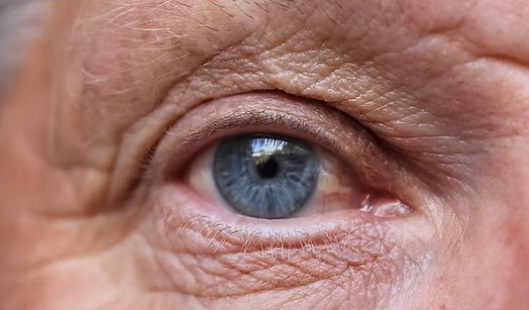Age-Related Macular Degeneration is Driven by Silent Chronic Inflammation. Early Intervention Helps
Nikhil Prasad Fact checked by:Thailand Medical News Team Nov 23, 2025 8 hours, 21 minutes ago
Medical News: Scientists from the University of Minnesota Medical School have uncovered powerful new evidence that blocking chronic inflammation may help prevent early age-related macular degeneration (AMD) before it progresses into serious and irreversible vision loss. AMD is the leading cause of blindness among older adults, and nearly 20 million Americans already show early signs of this condition. In a major step forward, this
Medical News report reveals findings that early intervention against inflammatory pathways could delay or even prevent the harmful changes that gradually destroy central vision.
 Age-Related Macular Degeneration is Driven by Silent Chronic Inflammation. Early Intervention Helps
How AMD Damages the Eye Over Time
Age-Related Macular Degeneration is Driven by Silent Chronic Inflammation. Early Intervention Helps
How AMD Damages the Eye Over Time
AMD slowly attacks the macula, the part of the retina needed for seeing faces, reading and recognizing details. In its earliest stages, tiny deposits begin to accumulate beneath the retinal pigment epithelium and immune cells start infiltrating the subretinal space. Over time, these build into more dangerous deposits linked with severe vision loss. The research team discovered that this entire chain of damage is strongly driven by a key inflammatory mechanism known as the inflammasome pathway, particularly the NLRP3 component that triggers release of inflammatory molecules.
Key Experiments Show How Blocking NLRP3 Protects Vision
The Minnesota researchers used advanced mouse models, including a rare inherited condition called Malattia Leventinese or Doyne honeycomb retinal dystrophy, which mimics many features of early AMD. They found that animals with excessive NLRP3 signaling developed hallmark disease signs: more inflammation, more immune cell invasion into the retina and a sharp rise in early harmful deposits. However, when the scientists genetically removed NLRP3 or its partner molecule caspase 1, the protective effect was dramatic. The dangerous deposits shrank, coverage areas decreased and overall early AMD-like damage was reduced. These results showed that shutting down this specific immune trigger could slow both age-related and inherited retinal degeneration.
Why These Findings Could Change Future AMD Prevention
The study provides one of the clearest demonstrations to date that chronic, unresolved inflammation is not just associated with AMD but helps drive it from the earliest stages. The work also shows that even healthy aging retinas form deposits linked to inflammasome activity. Researchers hope to next investigate whether anti-inflammatory approaches could not only delay AMD but possibly reverse early damage if caught in time.
Conclusion
This research suggests that controlling the NLRP3 inflammasome pathway could become a groundbreaking strategy for preventing early-stage AMD and potentially protecting millions from future blindness. By proving that inflammation directly fuels the earliest harmful changes in the eye, the study opens the door to new preventive therapies that intervene before permanent retinal damage occurs. If these a
pproaches can be translated into safe human treatments, they may halt or slow a disease that currently has no early-stage solutions and continues to rise worldwide.
The study findings were published in the peer reviewed journal: Cell Death and Disease
https://www.nature.com/articles/s41419-025-08104-y
For the latest on Age-Related Macular Degeneration, keep on logging to Thailand
Medical News.
Read Also:
https://www.thailandmedical.news/articles/ophthalmology-(eye-diseases)
https://www.thailandmedical.news/articles/anti-aging
https://www.thailandmedical.news/articles/glaucoma-news
